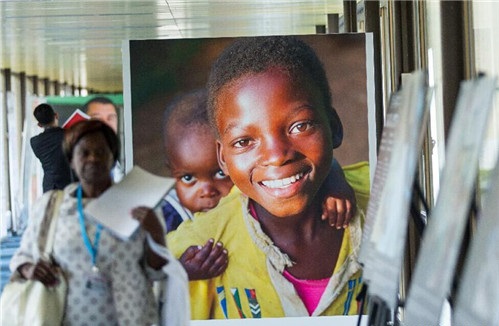

Follow us on:  
|


There are far fewer children living under poverty in South Africa, the Child Gauge 2017 report found [Xinhua]
The South African Child Gauge, published in Cape Town every year since 2005, monitors the progress of children in the country with particular emphasis on their rights.
This year, the report warned that violence against children remained widespread in South Africa.
Its research revealed that 33 per cent of children under 18 are victims of sexual violence and abuse.
This feeds into aggression, anti-social behavior and further violence.
The report stated that
“Violence has inter-generational consequences, as children who experience violence are at higher risk of victimisation
and perpetration – including adopting harsh or violent parenting practices. Violence against children cost South Africa an estimated R239 [$17] billion – or 6 per cent of the gross domestic product – in 2015.”
The report goes on to say that education has largely under-served South African children with 27 per cent under five years of age classified as stunted.
Fifty-eight per cent cannot read fluently. This is of particular importance since it “undermines [children’s] chances of receiving a quality education and minimizes their opportunities for employment and active engagement in society”.
But there are positives.
The study found that since 2003, the number of children living under the ultra-poverty line fell from 43 to 12 per cent. By the same token, the number of children living under the standard of “upper bound” poverty line fell from 79 to 62 per cent.
In terms of development, more children than ever before were going to primary school while 68 per cent had access to clean and adequate water in their homes.
“Survival rates have improved too, and the under-five mortality rate dropped from 81 to 37 deaths per 1,000 live births between 2003 and 2015,” the report added.
The BRICS Post